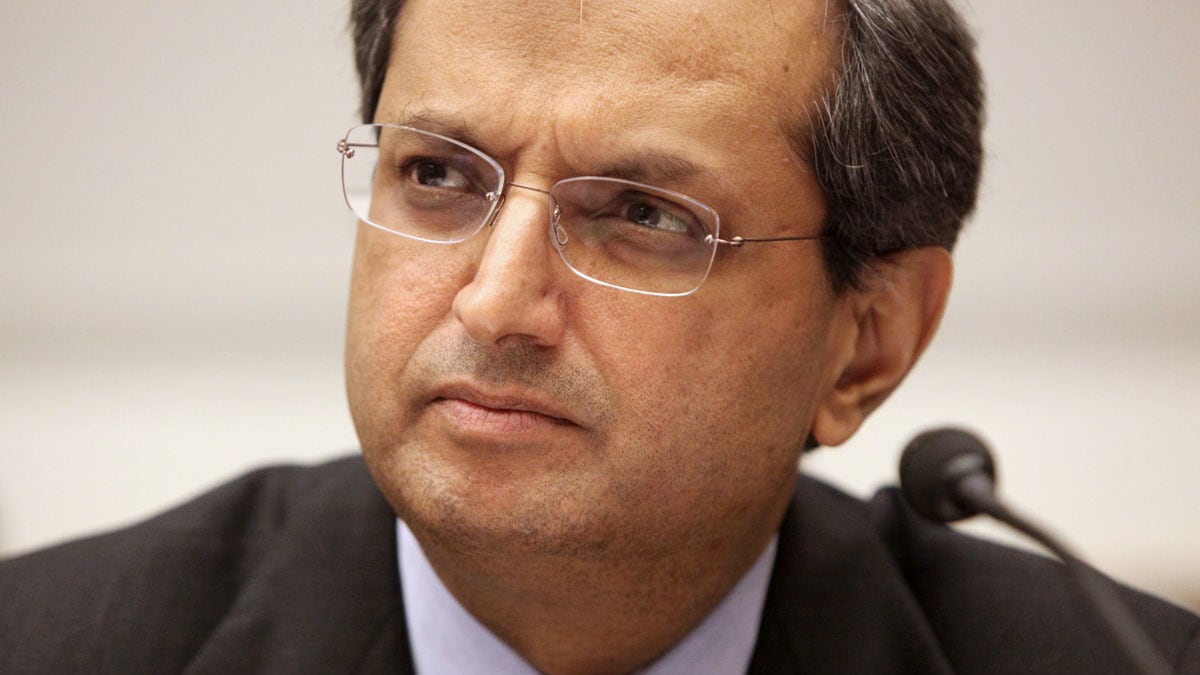Usually, when a CEO of a gigantic company is about to get canned by the board, it prepares the company and the public through the media. After Tuesday’s surprise resignation of Citigroup CEO Vikram Pandit, the operation went into reverse. First, the CEO resigned, and then everyone involved desperately tried to explain, anonymously and publicly, in print and on TV, what the hell just happened.
As is usually the case, The Wall Street Journal and The New York Times’s DealBook have gotten what looks to be an authoritative account of how and when the Citigroup board decided that Pandit either had to resign or face firing. The problem is that the accounts delivered anonymously are at best, inconsistent with what Pandit and Citi’s chairman, Michael O’Neill, were saying yesterday to the public and may be outright contradictory.
With public statements from the parties involved and accounts that have appeared since the firing, we can cobble together a rough timeline of the process that ended in Pandit’s resignation.
ADVERTISEMENT
To understand just how strangely this has played out, we need to roll the clock back to early August, when The Wall Street Journal ran an article reporting that Pandit was working on an eventual succession plan.
The article said that “Mr. Pandit has told colleagues that he intends to stay for several years” and that “Mr. Pandit has the full support of the board.” In light of what has occurred in the last day, there are perhaps hints that Michael O’Neill, Citi’s chairman, was actually asking Pandit to groom his successor. In fact, it’s right there in the piece.
The Journal reported Mr. Pandit was planning his succession in part to fulfill the conditions for his $16 million pay package; the board was “pushing Mr. Pandit to cultivate candidates who could one day replace him.” The first name mentioned? Michael Corbat, the head of Citigroup in Europe, who replaced Pandit on Tuesday.
So was O’Neill really getting Pandit to groom Corbat with only several weeks left for Pandit instead of several years? Let’s move forward on the timeline.
Wednesday’s New York Times piece on Pandit’s firing, reports that “for weeks, though, Mr. O’Neill and other board members had been mapping out the transfer of power.” The wheels started rolling on the change “while Mr. Pandit was in Japan last week attending a gathering of the International Monetary Fund and the World Bank.”

The Journal too, in its piece on the firing, last updated Wednesday morning, describe Pandit’s Tuesday resignation as the “culmination of months of growing board disenchantment with Mr. Pandit” and lists the loss incurred in selling the company’s stake in a joint venture with Morgan Stanley as one of Pandit’s major failures during his CEO tenure.
Citigroup finally divested itself of the brokerage on Sept. 11, more than a month after the Journal published an article detailing Pandit’s plans to start the succession process for his eventual departure in several years.
Putting all the narratives together, it looks like the board had been looking to do something since Michael O’Neill came in as chairman in March, that the grumbling became more insistent after Citi’s shareholders objected to Pandit’s pay package in April and the Federal Reserve rebuffed Pandit’s proposal to buy back $8 billion worth of Citigroup stock later that week.
After the brokerage sale, which ultimately led to Citi taking a $5 billion write down, the pace accelerated, culminating in yesterday’s surprise firing.
Corbat, apparently, had been asked by O’Neill two weeks ago “if he was ready to take the reins of the company,” and, the Journal says, he was in New York Monday ready to take charge. That morning, of course, Pandit was discussing Citigroup’s earnings and gave zero indication that he was on the way out.
This narrative makes the August Journal article look like it was describing the board making Pandit find a successor who would take over far sooner than he imagined.
But this is all based on what anonymous sources told the Times and Journal. On Tuesday, Citigroup board members, Corbat, and Pandit did their best publicly to explain a firing that surprised everyone on Wall Street and shocked Citigroup executives who only found out on their Bloomberg terminals.
O’Neill and Pandit, in a call with analysts and in on the record interviews, made it seem like Pandit had independently decided to resign and the board just accepted it.
Pandit told CNBC yesterday that “After five years of accomplishing what we needed to do, it was the right time.” And he told the Times that resigning was “something that I had been thinking about for a while,” and then on Tuesday, it had just “occurred to me to go see Mike.”
O’Neill told analysts in a call Tuesday afternoon that “Vikram chose to submit his resignation, and the board accepted it.” Later in the call, one analyst, Mike Mayo, asked if O’Neill could take the analysts “behind the scenes” and say whether or not Pandit had been asked to submit his resignation. O’Neill responded, nearly repeating himself, that “Vikram offered his resignation and the board accepted it.” Earlier, in an interview with Fox Business, Mayo said: “There must be some story behind the scenes. I don’t know what it is. This is a ludicrous CEO transition.”
We now know that there were strong disagreements between the board and Pandit that ended on Monday when, according to the Journal, O’Neill “told Mr. Pandit afterward he should resign or face being fired.”






